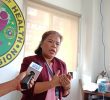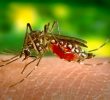Data from the CHO noted that the Poblacion area has 10 cases of leptospirosis, Talomo North has five, Buhangin has four while there’s one case each in Agdao, Baguio, Marilog, Toril and Tugbok.
By ALEX D. LOPEZ
Davao Today
DAVAO CITY, Philippines – The cases of leptospirosis here rose claiming already four lives while 28 individuals are still infected.
Dr. Josephine Villafuerte, head of the City Health Office, revealed the figures, saying those affected were from the areas recently submerged in floodwaters.
The health officer said, during the regular I-speak on February 7, that three of those who died were from Tugbok, Matina-Gravahan and Bacaca while the other one was from Barangay 2-A in Poblacion.
These areas were considered as badly hit during the January 20 floods.
Data from the CHO noted that the Poblacion area has 10 cases of leptospirosis, Talomo North has five, Buhangin has four while there’s one case each in Agdao, Baguio, Marilog, Toril and Tugbok.
Villafuerte ensured that antibiotics needed for treatment would be available to those infected residents.
According to the World Health Organization (WHO), leptospirosis is a bacterial disease that affects both humans and animals.
Humans are infected through direct contact with the urine of infected animals or with a urine-contaminated environment, such as stagnant waters. The bacteria enter the body through cuts or abrasions on the skin, or through the mucous membranes of the mouth, nose and eyes but cases of person-to-person transmission are rare.
In the early stages of the disease, symptoms include high fever, severe headache, muscle pain, chills, redness of the eyes, abdominal pain, jaundice, haemorrhages in the skin and mucous membranes, vomiting, diarrhea and rash.
The CHO has recommended for massive advisories to educate the local populace on leptospirosis and for massive campaigns to inform the public about the signs and symptoms of leptospirosis. Village leaders were also urged to inform their residents, especially the children not to expose themselves to stagnant waters that are the usual source of leptospirosis.
WHO was able to record three outbreaks of leptospirosis worldwide, first on 21 September 2000 in France and Canada and second in 17 July 2004 in Kenya. (Alex D. Lopez/davaotoday.com)










